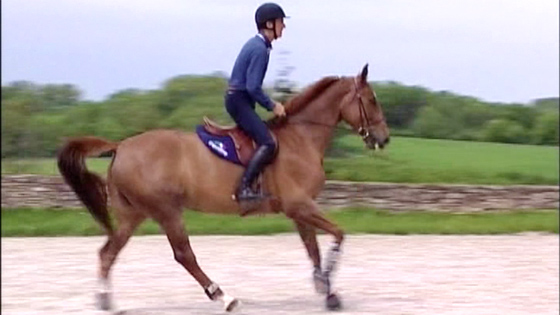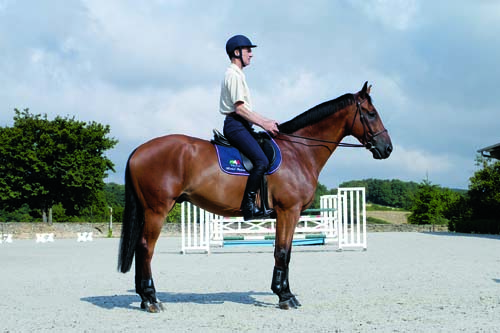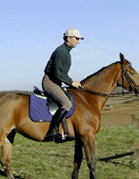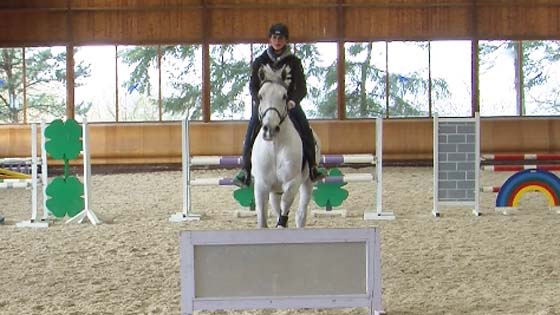Seated and 2 points position

Of course the forward seat requires the rider not being positioned too far forward or too far back, to avoid preventing his horse’s shoulders and back from moving freely. Unfortunately, too few riders manage to comply with all these conditions, usually due to unsuitable physical conditions (...)
Should one ride seated or using the forward seat? This is another often- repeated question. This is what I would answer if I were a horse: «I prefer to be ridden by a rider with a forward seat because in this position he can absorb (cushion) my movements with his hips-knee-ankle joints. Balanced and with low hands!... That’s even better. I can fully use my back and my neck; it is ideal for nice round jumps and working correctly».
Of course the forward seat requires the rider not being positioned too far forward or too far back, to avoid preventing his horse’s shoulders and back from moving freely. Unfortunately, too few riders manage to comply with all these conditions, usually due to unsuitable physical conditions: too heavy, too much swaying, too tall, too rigid… This is why I always advise my pupils to vary their seat between the seated position and a forward position. While the truth lies in the middle, one must however be able to ride in the two extreme ways: very close to the horse or very high over the saddle. There is an entire range of possibilities the rider must be capable of exploiting, between a work out course jumped in an indoor school, where one prefers a seated position, and outdoor equitation such as
eventing or riding a derby class, where the forward seat is more suitable.



